Manual Transfer Switches
Connect a generator to a home or business electrical system with a Manual Transfer Switch to run furnaces and air conditioners, refrigerators, freezers, pumps, and all the necessities.
Generator Manual Transfer Switch
A manual transfer switch connects a generator to an electrical system and isolates generator power from mains utility power. A cord plugs into a generator outlet—usually a 120/240-Volt 30-Amp or 50-Amp receptacle—and into an inlet box on the building to receive power. The inlet box connects directly to the generator manual transfer switch.
When a power outage occurs, the generator cord connects the inlet box to the generator. After the generator starts and warms up, the operator moves the manual transfer switch to the “Generator” position. The transfer switch isolates the utility first, then it connects the generator to the electrical system. Generator power can flow through the building but not the utility lines.
Manual Generator Transfer Switch Advantages
A system that uses a manual generator transfer switch has several main advantages.
- It provides a simple and safe means to use generator power at home or business.
- A transfer switch is the preferred method to power a building while meeting NEC code.
- Many utility companies and code enforcement agencies require a manual transfer switch to use a temporarily connected generator.
- The generator can power hard-wired appliances like furnaces, well pumps, water heaters, and air conditioners.
- No extension cords to run, just one cord connects to the building.
The manual transfer switch makes connecting and using a portable or mobile generator easier and safer. No extension cords to run from outside to inside the home or business—and no cords to trip over. Just plug the generator into the inlet box, start it, and move the switch to the generator position. All the connected appliances have power, including those that extension cords can’t connect like a furnace or well pump.
Even more important, a manual transfer switch meets code requirements and passes an inspection before it goes into use. Since the installation is code approved and passes inspection, utilities and insurance companies can’t cite building code violations to deny coverage or service.
Manual Transfer Switch for a Generator
The installation process requires an electrician and a building permit, and the work must pass inspection. A homeowner with the right experience and knowledge could do the work on a subpanel type installation provided the building department approves and issues a building permit after the homeowner submits a plan.
A new double circuit breaker feeds the generator manual transfer switch from the main panel. The circuits the generator will power are disconnected from the circuit breakers in the main panel and connected to new circuit breakers in the manual transfer switch. Adherence to the NEC is important for wire sizes, circuit breakers, raceway restrictions, and all other codes.
Buy a Manual Transfer Switch
Plan to install a manual transfer switch that matches or exceeds the generator’s maximum rated capacity. A generator with a 50-Amp outlet can supply a 50-Amp manual transfer switch but not a 30-amp transfer switch. Not sure which one to buy? Call us today at 855-453-4494 and we’ll be glad to help.
-
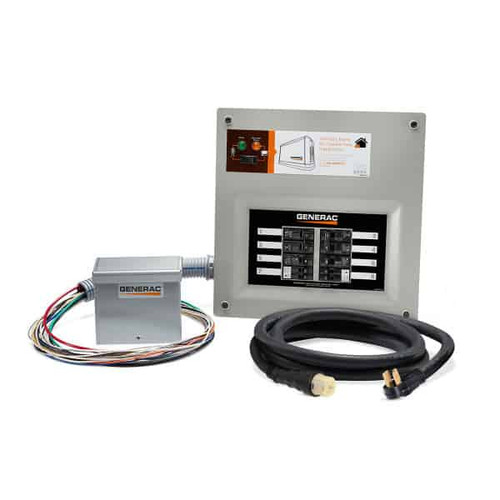
Model #: 9855
Generac HomeLink 50 Amp Manual Transfer Switch Kit for Portable Generators | 9855
Norwall's Low Price
$801.00 -
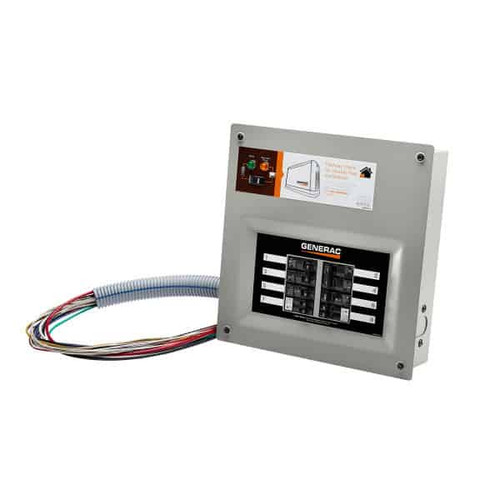
Model #: 9854
Generac HomeLink 50 Amp Manual Transfer Switch for Portable Generators | 9854
Norwall's Low Price
$634.00 -

Model #: 6854
Generac HomeLink 30 Amp Manual Transfer Switch Kit with Aluminum Power Inlet Box | 6854
Norwall's Low Price
$487.00 -
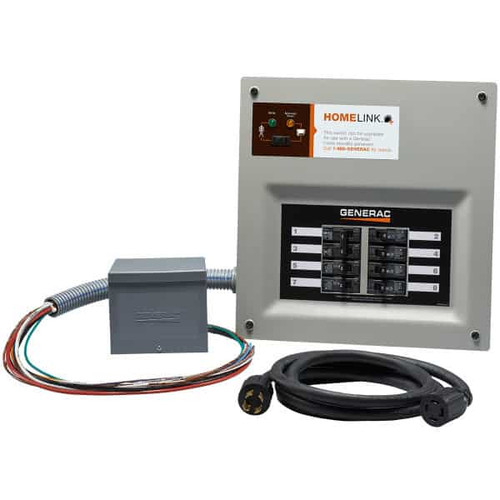
Model #: 6853
Generac HomeLink 30 Amp Manual Transfer Switch Kit with Resin Power Inlet Box | 6853
Norwall's Low Price
$461.00 -

Model #: 6852
Generac HomeLink 30 Amp Manual Transfer Switch for Portable Generator | 6852
Norwall's Low Price
$421.00 -

Model #: 6334
Generac 100 Amp Single Load Manual Transfer Switch Nema 1 | 6334
Norwall's Low Price
$649.00 -
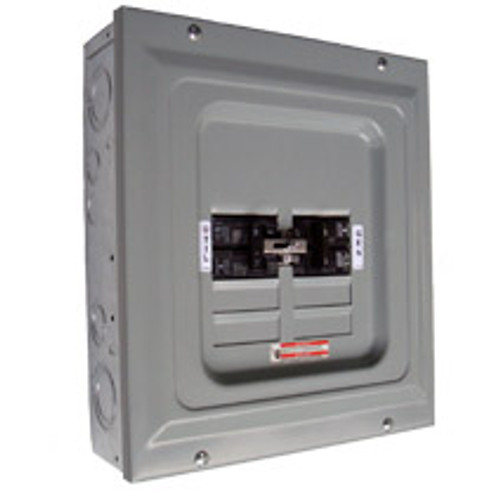
Model #: 6333
Generac 60 Amp Single Load Manual Transfer Switch Nema 1 | 6333
Norwall's Low Price
$208.00 -

Model #: 6335
Generac 200 Amp Service Entrance Rated Manual Transfer Switch with 50 Amp Generator Main Nema 3R | 6335
Norwall's Low Price
$584.00 -

Model #: 6382
Generac 200 Amp Service Entrance Rated Manual Transfer Switch with 30 Amp Generator Main Nema 3R | 6382
Norwall's Low Price
$568.00 -
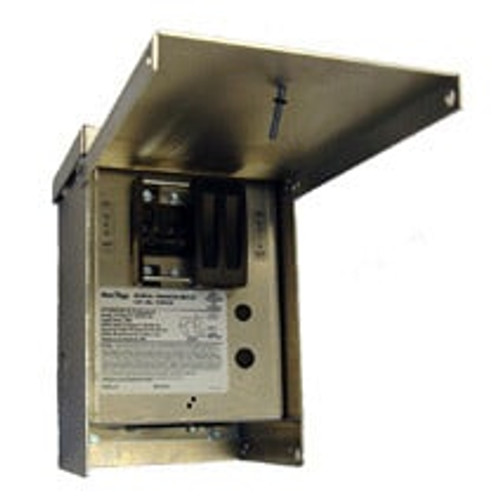
Model #: 6377
Generac 30 Amp Single Circuit Manual Transfer Switch Nema 3R | 6377
Norwall's Low Price
$346.00 -

Model #: WMTS30A10C
Westinghouse 30 Amp Manual Transfer Switch with 8-Circuits | WMTS30A10C
Norwall's Low Price
$399.00
-

Model #: 9855
View DetailsNorwall's Low Price
$801.00 -

Model #: 9854
View DetailsNorwall's Low Price
$634.00 -

Model #: 6854
View DetailsNorwall's Low Price
$487.00 -

Model #: 6853
View DetailsNorwall's Low Price
$461.00 -

Model #: 6852
View DetailsNorwall's Low Price
$421.00 -

Model #: 6334
View DetailsNorwall's Low Price
$649.00 -

Model #: 6333
View DetailsNorwall's Low Price
$208.00 -

Model #: 6335
View DetailsNorwall's Low Price
$584.00 -

Model #: 6382
View DetailsNorwall's Low Price
$568.00 -

Model #: 6377
View DetailsNorwall's Low Price
$346.00 -

Model #: WMTS30A10C
View DetailsNorwall's Low Price
$399.00
Connect a generator to a home or business electrical system with a Manual Transfer Switch to run furnaces and air conditioners, refrigerators, freezers, pumps, and all the necessities.
Generator Manual Transfer Switch
A manual transfer switch connects a generator to an electrical system and isolates generator power from mains utility power. A cord plugs into a generator outlet—usually a 120/240-Volt 30-Amp or 50-Amp receptacle—and into an inlet box on the building to receive power. The inlet box connects directly to the generator manual transfer switch.
When a power outage occurs, the generator cord connects the inlet box to the generator. After the generator starts and warms up, the operator moves the manual transfer switch to the “Generator” position. The transfer switch isolates the utility first, then it connects the generator to the electrical system. Generator power can flow through the building but not the utility lines.
Manual Generator Transfer Switch Advantages
A system that uses a manual generator transfer switch has several main advantages.
- It provides a simple and safe means to use generator power at home or business.
- A transfer switch is the preferred method to power a building while meeting NEC code.
- Many utility companies and code enforcement agencies require a manual transfer switch to use a temporarily connected generator.
- The generator can power hard-wired appliances like furnaces, well pumps, water heaters, and air conditioners.
- No extension cords to run, just one cord connects to the building.
The manual transfer switch makes connecting and using a portable or mobile generator easier and safer. No extension cords to run from outside to inside the home or business—and no cords to trip over. Just plug the generator into the inlet box, start it, and move the switch to the generator position. All the connected appliances have power, including those that extension cords can’t connect like a furnace or well pump.
Even more important, a manual transfer switch meets code requirements and passes an inspection before it goes into use. Since the installation is code approved and passes inspection, utilities and insurance companies can’t cite building code violations to deny coverage or service.
Manual Transfer Switch for a Generator
The installation process requires an electrician and a building permit, and the work must pass inspection. A homeowner with the right experience and knowledge could do the work on a subpanel type installation provided the building department approves and issues a building permit after the homeowner submits a plan.
A new double circuit breaker feeds the generator manual transfer switch from the main panel. The circuits the generator will power are disconnected from the circuit breakers in the main panel and connected to new circuit breakers in the manual transfer switch. Adherence to the NEC is important for wire sizes, circuit breakers, raceway restrictions, and all other codes.
Buy a Manual Transfer Switch
Plan to install a manual transfer switch that matches or exceeds the generator’s maximum rated capacity. A generator with a 50-Amp outlet can supply a 50-Amp manual transfer switch but not a 30-amp transfer switch. Not sure which one to buy? Call us today at 855-453-4494 and we’ll be glad to help.
